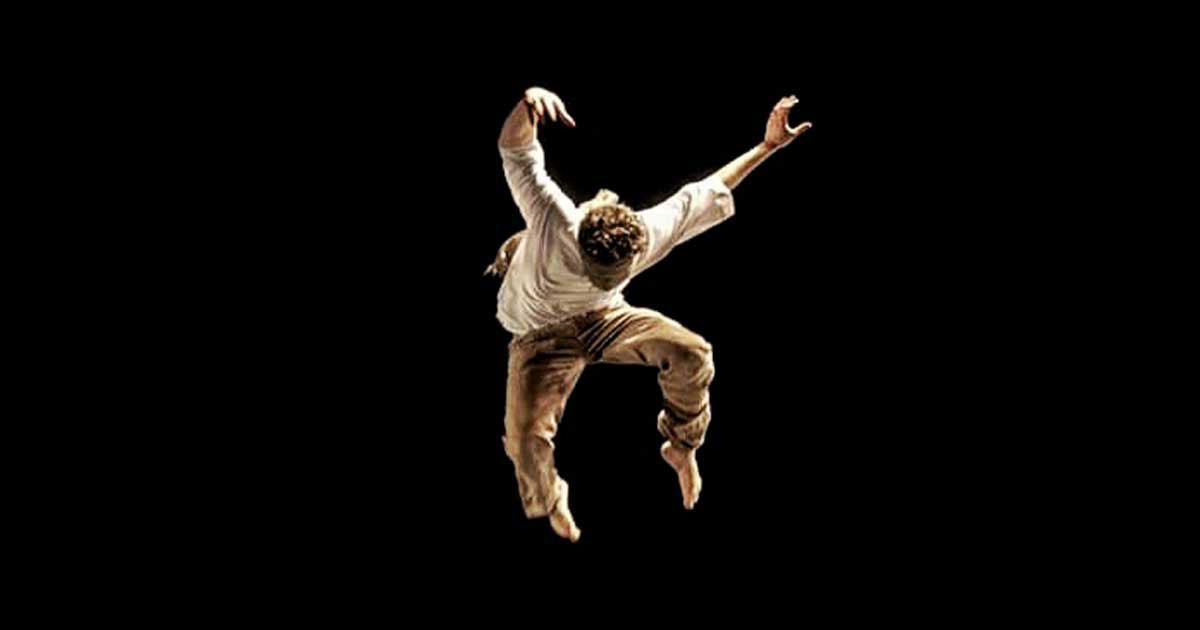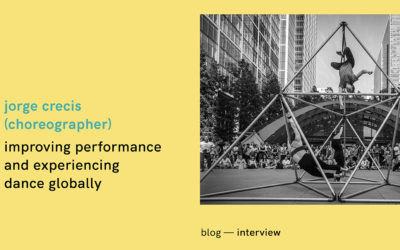DIY DANCE SERIES
Raphael Miro Holzer
In this first interview, we introduce you to the work and artistic vision of Raphael Miro Holzer, a choreographer, performer and dance pedagogue born in Vienna and currently based in Barcelona. His current work in progress, ‘Blueprint’, explores the connection between language and movement, where he’s exploring different art forms with a group of international performers.
“Sharing and becoming more transparent about your creative process is important, but another possibility would be to look into how other art forms are dealing with this topic.”
Who are you?
My name is Raphael Miro Holzer, I was born in Vienna in 1994 and I’m a Barcelona-based dance pedagogue, choreographer and a performer, working in dance but also theatre. My first contact with movement started when I was very young, through martial arts. Later on, a school colleague of mine went to ballet classes in a dance studio and she told me about it – and I just wanted to see what she was doing! And then I saw at that studio that there were lots of courses. I went tap dancing and after I did some classical training as well until. When I finished my high school studies, at the Dance Conservatory, I wanted to have more aesthetical knowledge – to learn more about literature, media so I went for a theatre and cinema studies in the main university in Vienna. I came back to dance after a break of 5 years – it was a very intensive full-time study. Once I was keen to experience a more international environment, I went for an Erasmus at the Institute del Teatre Barcelona, where I’m currently finishing my Bachelor. I had the opportunity to stay here and find a different environment – comparing Austria, Spain and the dance world. It has been a place to grow as a choreographer, as a creator and to use my knowledge from my theoretical studies with the language of expression I’ve chosen as an artist, which is the dance – not a specific technique, but the physical expression itself. That’s why I ended up working in theatre and somewhere between the contexts of dance and theatre, in dramaturgy.
What is your contribution to the contemporary dance scene?
That’s a very interesting question (laughs). I like to devote my passion in contemporary dance but also other cultural expressions and I like to showcase a negotiation between them. Currently, I’m very focused on a negotiation between language and movement which is very personal, based on my experience in a different country and culture. But also in a philosophical way – in dance, I’m dealing a lot with how we do it, how we are making the communication with the audience and if you’re using the right language. If it’s accessible enough and how we can create a constructive and transparent communication.
Can you tell us a little bit more about the creative process of ‘Blueprint’?
In my current project, which is called ‘Blueprint’, I give a lot of freedom to the interpreters and I respect their movement language since it’s the topic. My previous project – ‘Babel in Progress’ – was bi-language and brought a lot of philosophical questions. There were a lot of connections between the story of the Babel Tower and the dancers of the piece: a confusion of languages, people who didn’t understand each other, which is something I’m experiencing every day as a foreigner in a different country. However, I’m experiencing that we are so different but I also have so much in common and the process of communication is body language.
For me, language is very important once the dance is not a literal art, compared to theatre, movies or even the music industry. We’re not telling the story to the audience in their language. So there are many topics to deal with in ‘Blue Print’. We’re still in the creative process… For us (Raphael and performers), it’s really about notations – so ‘Blueprint’ is a series of notation experiments. The interpreters have their own space to create the material and it’s more interesting for me to collaborate with interpreters that give their language into the studio.


How is your day before a performance?
My entire day is about preparing that moment. The first thing I do is going to the supermarket to buy stuff for me and my dancers and then we meet at the studio to do a warm-up altogether, so we come back to each other. This moment of connection with each other is really important for me to keep having trust within the group. After that, we’re travelling to the theatre or to the city that we’re performing. And there, it’s quite individual I think. Some dancers are warming-up all the time, some are listening to music to calm down the adrenaline until the moment of performance.
In your opinion, how does dance become a more accessible language for everyone?
I think it’s about sharing more the creative process and asking this question: ‘Am I using the right language?’ Because there are audience members who aren’t part of the dance scene. They don’t have all the background knowledge. So, it’s really how to make it attractive to those people. For me, sharing more about the creative process is one possibility, even though it shouldn’t be the only one. Some creative processes are not meant to be shared, maybe you don’t want to share something that is not ready yet, you want to protect your process… Sharing and becoming more transparent about your creative process is important, but another possibility would be to look into how other art forms are dealing with this topic. Dance itself from my perspective is very different from other arts. It stills somehow more traditional – even if it’s changing. I believe now it’s the moment to rethink this concept and who knows where we can go from there on.




0 Comments